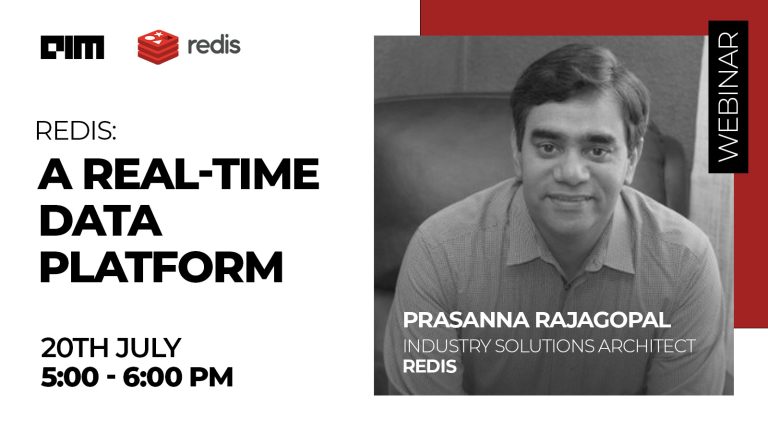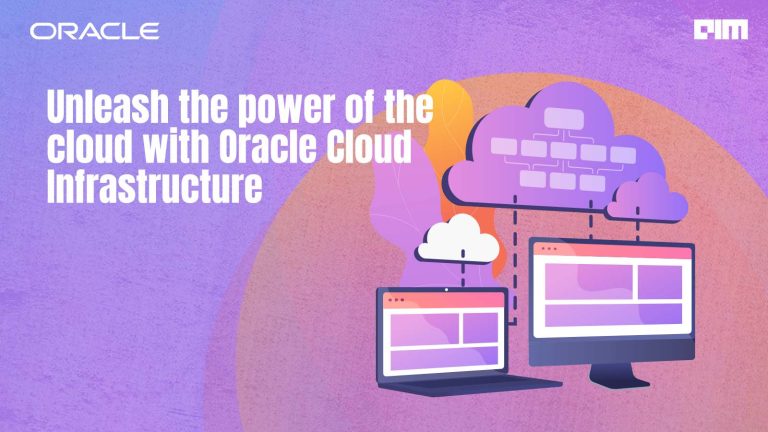Analytics India Magazine got in touch with Chris Chelliah, SVP-Customer Strategy, Insight and Business Development at Oracle JAPAC, to understand how businesses can create a holistic analytics approach for their organisation and foster a data-driven culture. He also shines the light on how Oracle’s converged data management strategy is helping businesses save time and money to drive faster innovation and improve productivity.
AIM: Are organisations in JAPAC doing enough to democratise data within their enterprise?
Chris: Talking to CXOs over the last six months has really highlighted how much focus there is on the need for data democratization. But while these leaders understand that data is the lifeblood of their business, in reality, only a few have significantly transformed their organisations into data-driven enterprises.
Now is the time for CXOs to stop being ‘digital commuters’ and instead take charge as a ‘digital driver’. With the cloud, data management has never been easier, with intuitive, autonomous, self-service data and analytics tools at our disposal that cover the entire information lifecycle – i.e. data capture, storage, accessibility, monitoring and security, analysis and reporting.
Today we are seeing users across the globe realising the benefits of autonomous data management. In fact, Oracle Autonomous Database is one of the most successful new product introductions in Oracle’s 40-year history. In the last year, we have seen its consumption revenue rise by over 50%.
Obviously, technology is only one part of the equation in terms of organisations getting actionable insights from the ever-increasing amounts of data – there is also the need to foster a data-driven culture. Getting employees on board is a critical and often missed step in this journey.
AIM: How can organisations get their analytics strategy right?
Chris: All data tell a story. The first step is to take a unified approach. Eliminating data silos, making the right data available at the right time to the right people, ensuring data accuracy, governance and security – these provide the foundation for analytics to be effective.
Having a holistic analytics platform then becomes key. A cloud-based platform that delivers or at least can integrate all the key capabilities required is essential, covering data integration, data warehousing or data lakes, visual dashboarding and reporting.
It is also key to select a platform that can bring in artificial intelligence (AI) and machine learning (ML) powered capabilities to enable the organisation to unearth predictive insights. Many people think this is complex and expensive, but it doesn’t have to be. Instead, these technologies can be embedded within existing cloud solutions that users are already familiar with, really helping ease of adoption.
AIM: Oracle is vocal about having a converged data management strategy. Why? How are your customers benefiting from this?
Chris: One of Gartner’s top tech trends for 2021 is the rise of the Intelligent Composable Business that can adapt as the situation changes. For that to happen, Gartner recommends that technology providers should design products with a comprehensive vision – changing from single point solutions to a set of preassembled collections of business capabilities. This has been our strategy for years.
Our rationale is simple. Why would you spend time and effort managing multiple, disparate databases for various different data formats – relational, JSON, XML, spatial, graph, OLAP, even blockchain, when you can have a single, robust platform for all requirements? Such a converged approach eliminates data silos and makes its management easier and resource-light.
It also ensures better data security. Having a single data store throughout the data management cycle does away with moving data across multiple data stores a number of times, which can open an organisation up to greater chances of data theft. It also helps eliminate issues with data integrity, and data consistency.
And with IT budgets always under scrutiny, substantial cost savings can be made with a converged data management approach – it requires fewer resources to manage and monitor multiple databases and data tools/applications. These resources can instead be redeployed for innovation and business growth.
This approach also supports developers – it removes the need to know how to work with different database languages and tools, so they can focus more on developing applications without having to worry about data persistence.
________________________________________________
“Why would you spend time and effort managing multiple, disparate databases for various different data formats – relational, JSON, XML, spatial, graph, OLAP, even blockchain, when you can have a single, robust platform to manage all your data requirements? Such a converged approach eliminates data silos and makes its management easier and resource-light.”
__________________________________________________
AIM: As a leader in data management, what is Oracle’s approach to Analytics?
Chris: Oracle’s mission is to help people see data in new ways, discover insights and unlock endless possibilities. In line with this, we have a very simple approach to analytics.
We want to make it as easy as possible for businesses to find data, bring it together, manage it without a huge lift from IT, so users can access it and gain actionable insights. We provide a complete platform of data tools, which has been recognised by the likes of Gartner in its 2021 Gartner Magic Quadrant for Analytics and Business Intelligence Platforms. Oracle Analytics is one of the highest-positioned vendors for completeness of vision and ability to execute.
These tools, which can be accessed in the cloud, on-premises, or through a hybrid model, deliver powerful self-service analytics to help employees access organisation-wide data, discover insights and collaborate with colleagues from anywhere – with minimal help from IT.
Additionally, we embed ML and AI to make it easier for users from across the organization to analyse data, make smarter predictions and better, faster decisions and without the need to be trained data scientists.
For example, with Explainable Machine Learning, any user can now see simple explanations of the factors that influenced a machine learning model to predict a certain outcome. In addition, with Automated Data Preparation, a data profiling engine samples and scans data to identify and proactively prompt users about potential data quality issues, like automatically suggesting the obfuscation of sensitive credit card information or social security number.
The result is – using Oracle Analytics, our customers are reporting 40-70% faster analytics, 25-55% improved user productivity, 3x reduction in deployment time, with 30-60% lower costs.
Take the case of ICICI Bank, one of India’s largest private sector banks. ICICI Bank wanted to automate data sourcing, collating and filtering from multiple data systems to fast-track the insights-to-decision cycle. By using Oracle Analytics Cloud, the bank benefited from having a single, modern, scalable and common analytics platform with AI/ML capabilities for deeper, better analytics and more accurate reporting. This has helped improve their strategic decision-making process.
AIM: What kind of innovation in analytics is Oracle bringing to customers? What’s the likely impact on their business?
Chris: We have automated the analytics workflow to help users predict outcomes through richer interactions with data and added new capabilities aimed at providing all employees – not just data specialists – with easy-to-use, self-service analytics.
For instance, ‘affinity analysis’ helps organisations to discover relationships in data by identifying sets of items that often appear together. For example, if retailers can better understand co-occurrence patterns, they can revise their store layout to display more related/supplementary items that a customer is likely to purchase together, such as cereal and milk.
Another addition is AutoML, which is a User Interface (UI) that makes it easy for citizen data scientists, as well as trained professionals, to build and deploy ML models. Via a no-code, browser-based interface, the modelling process is simplified to just a few clicks. In principle, the UI runs our library of ML models on the data selected to suggest which might produce the best results against the business problem defined.
By putting these very easy tools into the hands of those people who understand the business, they are better able to spot opportunities and more quickly improve business outcomes, whether that is a better consumer experience or a gap for innovation.
Sports is one interesting area where we see increased adoption of cloud analytics. Several renowned global sports franchises like Red Bull Racing Honda – the four-time Formula 1 World Champion team, Premier League – the world’s most-watched football league and SailGP – the international sailing league, are using Oracle Cloud for faster, deeper and better analytics to improve decision-making and enhance the fan experience.
What is Oracle doing to tackle the talent crunch in data management/data science/analytics?
Today, data science and associated areas continue to be some of the most sought-after career options. Oracle is part of several initiatives to further grow the data science ecosystem globally.
A good example is our recent partnership with UNEP for the UN #WorldInnovationDay hackathon. During the three day event, more than 4000 participants, mentors and support staff from over 100 different countries around the world used innovative cloud technologies like AI, ML, digital assistants and advanced analytics to hack their way to solutions around three of the key United Nations Sustainable Development Goals: Health and Wellbeing, Quality Education and Decent Work and Economic Growth.
In fact, there was a strong representation from India in the winning teams and with regard to the use of analytics. We saw the first place was secured by the UC Berkeley Data Science team for Carby, an application that uses machine learning to track and reveal a product’s carbon footprint and suggest more environmentally friendly alternatives. Team Swasthya developed Local Angels, a global volunteer-based, human-to-human community-building application that uses analytics to connect volunteers with those in need of help, for example, those socially distanced from family and friends due to situations like COVID lockdowns.
In addition, Team Edu-FX created Eco-action, an equal action platform with the aim of sharing the local environmental issues with a broader audience so they can work together to find and collaborate on solutions.
We will continue to support such programs that encourage young talent in the data science stream to catalyse the development of innovative solutions that solve real-world challenges.




















































































